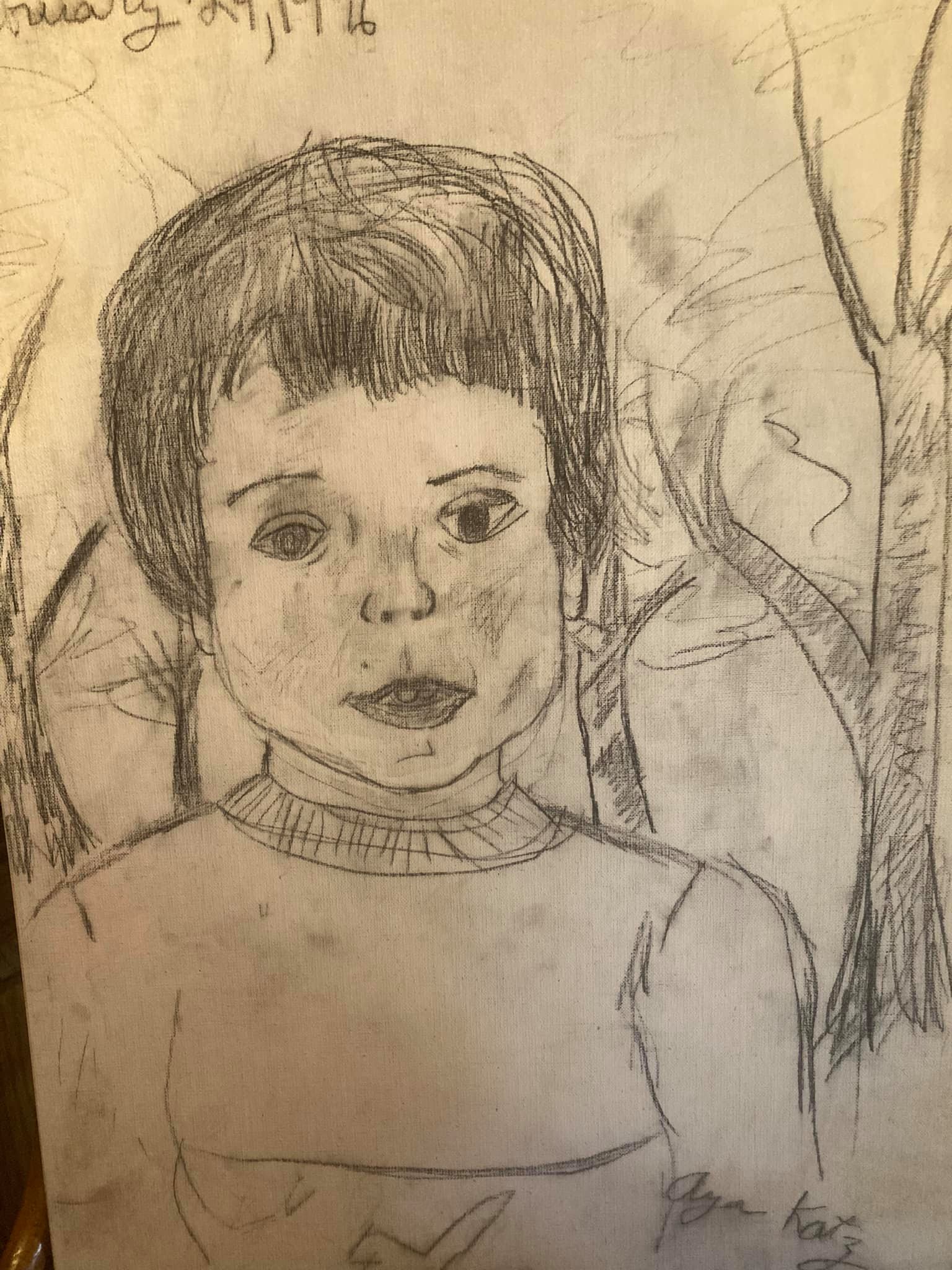Many people think that in order to paint well, you have to build a solid foundation for your painting in the form of a perfect sketch — in pencil or ink — of the object you are going to paint. Then they will transfer their sketch to the canvas, and there they will add the paint in a process of coloring in the perfect sketch. If they make errors in the sketch, they often will spend hours and days erasing and redrawing their sketch until it is satisfactory. But if you have a sketch in pencil or ink that you like, why even bother with the paint? That sketch is a work of art in itself.
I never pre-sketch my paintings on canvas, because if I do, I cannot bear to cover them up with paint. Here is an example of a sketch in pencil of my brother that I made back in 1976.
When I paint in acrylics, I also sketch on the canvas in acrylics. When I see that I have made an error, I do not “erase”. I just paint over it and make it better. This method of painting over errors is more encouraging than erasing, because you are forever moving forward and not back in the work. You can paint wet on wet and get it all done in a few hours. As you move forward through time with the wet paint, the image before you changes and grows and blossoms, but you never have to go back to an earlier stage, and errors are corrected in an organic process of dabbing on more paint.


